This article was co-authored by David Schechter, MD. Dr. David Schechter is a physician in Culver City, California. With over 25 years of experience as a family and sports medicine physician, Dr. Schechter specializes in mind-body medicine, preventive medicine, and chronic pain. Dr. Schechter received his MD from New York University and is an attending physician at Cedars-Sinai Medical Center. He was named a Top Doctor by Los Angeles Magazine and Men's Health Magazine. He has also written several books, including The MindBody Workbook.
There are 11 references cited in this article, which can be found at the bottom of the page.
This article has been viewed 40,806 times.
Your mid back can become tight or strained due to lack of exercise, poor posture, or an injury. This area, also called the thoracic spine, is made up of muscles, ligaments, and joints. You can relieve pain in your middle back by doing stretches and exercises that will release this area. Massage and physical therapy can also help to reduce middle back pain. If the pain becomes severe or gets worse, see your doctor for medical care right away. If you've recently injured your back, talk to your doctor first before doing back exercises.
Steps
Doing Back Stretches and Exercises
-
1Do sitting rotation stretches. You can do this stretch sitting in your office chair or on the floor. If you are sitting in your office chair, place your feet flat on the floor and sit up straight. Raise your left hand above your head and place it across your body onto the armrest on the right side of the chair. Let your right arm sit relaxed on the armrest or over the back of the chair. Hold for 10-20 seconds and then rotate on the other side.[1]
- If you are doing this stretch on the floor, sit cross-legged or with your legs straight in front of you. Raise your left hand over your head and place it across your body onto your right leg or the floor. Keep your right hand flat on the ground. Hold for 10-20 seconds and then repeat on the other side.
- Only rotate as far as you can without feeling any burning or stinging pain. A little discomfort is okay, as this means the area is being stretched. But the moment you feel any intense pain, come out of the stretch.
-
2Perform a supported back stretch with a rolled up towel or bolster. Sit down and place the rolled up towel or bolster behind you, against your tailbone. Lay your back over the bolster so it sits underneath your spine. Make sure the bolster is supporting your entire back, neck, and head. Slide a pillow under your head for extra support so it is not hanging off the bolster. Remain in this stretch for 2-5 minutes.[2]
- Try to relax and settle into the stretch, letting the bolster or towel support your weight.
- To come out of the stretch, gently roll over to one side and curl up in a fetal position with your knees close to your chest.
Advertisement -
3Do cat and cow pose. This pose is a great way to stretch out your middle back and improve the flexibility of these muscles. Position yourself on all fours with your shoulders over your hands and your hips aligned with your knees. Inhale as you curve your spine downward and look up towards the ceiling, stretching your neck and back. Exhale as you curve your spine upward and look down towards the ground. Repeat these stretches 5-10 times to release tension in your back.[3]
- You can also try looking over each shoulder and moving your hips from side to side as you do these poses to loosen up your spine and back.
-
4Perform cobra stretch. This stretch is done on your stomach with your arms placed on either side of you by your rib cage. Inhale as you press into your toes and lift your head, neck, and chest off the floor. Put weight into your hands to support your upper body as you stretch it upward. Exhale as you return back to the starting position. Repeat this stretch 5-8 times.[4]
- Cobra stretch is also a great way to strengthen your back muscles, which can help to prevent back pain in the future.
-
5Do a twist on your back. Twists are a great way to stretch your back muscles and spine to loosen them up. Lay on an exercise mat on your back and bring your knees up to your chest. Extend your left leg straight down on the floor and hug your right knee to your chest. Inhale as you slowly bring your right knee over to your left side, placing it down on the ground. Rotate your head to the right and extend your right arm out towards the right. Hold this twist for 15-20 seconds. Then, return to the center and repeat the twist on your left side.[5]
- This twist can be performed up to 3 times on each side to help you release middle back pain and tension.
Relieving Pain at Night
-
1Release tension in your back with a foam roller before you go to bed. A foam roller is a great way to get deep into painful areas on your back. Look for a foam roller that is long and wide. Lay down on the floor on your back and place the roller under any painful spots on your middle back. Then, rotate back and forth on your legs so the roller can release any tight spots, rolling them out. Move gently back and forth on the roller several times until the pain fades away.[6]
- Some rollers have a textured surface to make it easier to roll and release any tense areas.
- Buy foam rollers at your local exercise supply store or online.
-
2Use a hot compress on your back to reduce the pain. Put a warm wet cloth or a hot water bottle wrapped in a towel on your middle back for up to 20 minutes at a time. The heat can help to reduce spasms and help the area to heal. Use the compress before bed to make sleeping more comfortable.[7]
- You can also use a heating pad instead of a hot compress. Just make sure you don't fall asleep with the heating pad on or you could burn yourself.
- Taking a hot shower may also help relieve your back pain.[8]
- You can also help relieve muscles spasms in your back by applying heat. However, if the pain is due to an injury or from overdoing it, it might help more to use ice, since the cold will help reduce swelling in the area.[9]
-
3Sleep on your side or your back with a pillow under your legs. The best sleeping position for when you have back pain is on one side with a pillow places between your legs. If you prefer to sleep on your back, slide a pillow under your knees so your back is supported.[10]
- Make sure you also place a pillow under your head so your neck and spine are aligned with each other and your head is supported.
-
4Sleep with a back brace on if your doctor recommends it. Nighttime back braces can help to support your middle back while you sleep. Get a back brace that is customized to fit your body at your local medical supply store or through your doctor. Make sure the back brace is comfortable and well padded so you can sleep with it on.[11]
- Wearing a back brace can also be beneficial in the long term as it helps to correct any spinal issues and reduce your risk of developing back pain again in the future.
- Do not wear a back brace unless you're advised to do so by your doctor.[12]
-
5Take over-the-counter pain medication as needed. Look for ibuprofen or acetaminophen at your local drugstore. Follow the dosage instructions on the label and never take more than the recommended amount. OTC medication is a good short term option for managing your pain, especially when you are trying to sleep.[13]
- You can also use a topical treatment to ease your pain, like a hot-and-cold cream or an NSAID gel like diclofenac.[14]
- Other options like stretches, exercise, massage, and acupuncture can be used to manage your pain long term.
Seeing a Specialist
-
1Get a deep tissue massage in your middle back by a trained masseuse. Deep tissue massage can help to release any pain or tension in your muscles and joints. Look for a trained masseuse in your area who has experience working on middle back pain. Ask them to focus on releasing tightness and pain in this area.[15]
- These massages can be helpful at helping you manage your back pain in the long term.
-
2Try acupuncture on your middle back. Acupuncture can help to reduce pain and release tension in your middle back. Make sure you get acupuncture done by a trained professional at a licensed acupuncture clinic or center.[16]
- Acupuncture should not be too painful when done properly. It can be a good way to manage middle back pain and prevent it from coming back.
-
3Work with a physical therapist who specializes in back pain. If your middle back pain is severe and chronic, ask your doctor to refer you to a physical therapist. Go for a physical therapist who has worked with individuals with middle back pain before. The physical therapist can perform stretches and exercises with you to reduce back pain and show you ones you can do at home on your own.[17]
- A physical therapist can help you figure out if there are any changes you can make that will reduce your back pain. Pain in the middle of your back can be due to issues with your posture while you're working, from overdoing exercises like rowing, or even from stress.[18]
- You may need to go the physical therapist several times over a period of several months to help reduce your middle back pain.
Seeking Medical Care
-
1See your doctor if the pain becomes severe or doesn't improve after 2 weeks. If you experience other symptoms like pain or numbness and tingling in your legs or feet, weight loss, fever or bladder issues, go see your doctor for an assessment.[19]
- You should also go see your doctor if you are experiencing back pain for the first time after the age of 50, as it could be indicative of other conditions like osteoporosis.
-
2Have your doctor examine your middle back for issues or problems. Your doctor will do a physical exam of your middle back and ask you questions about your symptoms as well as your medical history. They may also get an X-ray, MRI, or CT scan on your back to see if you have any issues with your spine.[20]
-
3Discuss your treatment options. Depending on your diagnosis, your doctor may prescribe pain medication or muscle relaxants to manage the pain. In some cases, your doctor may give you injections of cortisone, an anti-inflammatory medication, to decrease inflammation around your spine and reduce the pain for a few months. They will also suggest that you do home care and try to stay upright so your back can heal.[21]
- If your middle back pain is due to a serious issue with your spine, your doctor may recommend surgery to address the issue. They will outline your surgical options, as well as the risks and recovery associated with surgery on your spine.
- If you hold stress in your neck and back, that could be a cause of your pain. In that case, your doctor may recommend stress-relieving practices like yoga, journaling, deep breathing, or mindfulness meditation.[22]
-
4Ask your doctor about any additional stretches or practices that might help. Depending on the cause of your pain, your doctor may suggest stretches or practices to improve your back and help it heal long-term. If your diagnosis isn't bad enough to warrant surgery, ask your doctor about alternative options.
Expert Q&A
-
QuestionHow can I relieve back pain at home?
 David Schechter, MDDr. David Schechter is a physician in Culver City, California. With over 25 years of experience as a family and sports medicine physician, Dr. Schechter specializes in mind-body medicine, preventive medicine, and chronic pain. Dr. Schechter received his MD from New York University and is an attending physician at Cedars-Sinai Medical Center. He was named a Top Doctor by Los Angeles Magazine and Men's Health Magazine. He has also written several books, including The MindBody Workbook.
David Schechter, MDDr. David Schechter is a physician in Culver City, California. With over 25 years of experience as a family and sports medicine physician, Dr. Schechter specializes in mind-body medicine, preventive medicine, and chronic pain. Dr. Schechter received his MD from New York University and is an attending physician at Cedars-Sinai Medical Center. He was named a Top Doctor by Los Angeles Magazine and Men's Health Magazine. He has also written several books, including The MindBody Workbook.
Family Medicine Practitioner Try soaking in a warm bath or hot tub to help relieve muscle spasms in your back.
Try soaking in a warm bath or hot tub to help relieve muscle spasms in your back. -
QuestionHow can I stretch my back?
 Jason Myerson, DPT, DMT, OCS, FAAOMPTJason Myerson is a Physical Therapist and a Certified Orthopedic Specialist. He is affiliated with Performance Physical Therapy & Wellness with clinics located in Connecticut. He serves as adjunct faculty in the Physical Therapy Department at Quinnipiac University. Jason specializes in helping active people get back to hobbies, activities, and sports they love while utilizing an integrated approach to wellness. He holds an MA in Physical Therapy from Quinnipiac University and a Doctorate in Physical Therapy (DPT) from Arcadia University. He is Residency and Fellowship trained in Orthopedic Manual Therapy, achieved a Doctorate in Manual Therapy (DMT) and became a Fellow of the American Academy of Orthopedic Manual Physical Therapists (FAAOMPT).
Jason Myerson, DPT, DMT, OCS, FAAOMPTJason Myerson is a Physical Therapist and a Certified Orthopedic Specialist. He is affiliated with Performance Physical Therapy & Wellness with clinics located in Connecticut. He serves as adjunct faculty in the Physical Therapy Department at Quinnipiac University. Jason specializes in helping active people get back to hobbies, activities, and sports they love while utilizing an integrated approach to wellness. He holds an MA in Physical Therapy from Quinnipiac University and a Doctorate in Physical Therapy (DPT) from Arcadia University. He is Residency and Fellowship trained in Orthopedic Manual Therapy, achieved a Doctorate in Manual Therapy (DMT) and became a Fellow of the American Academy of Orthopedic Manual Physical Therapists (FAAOMPT).
Physical Therapist & Certified Orthopedic Specialist Physical Therapist & Certified Orthopedic SpecialistExpert AnswerTry sitting up straight in a chair, placing your hands on opposite shoulders so your arms are crossed, and gently twisting back and forth. Another stretch you can try is lying on your side with your knees bent and your arms extended out in front of you. Bring your top arm up, over, and back until it touches the floor behind you. Then bring your arm back to the starting position and repeat.
Physical Therapist & Certified Orthopedic SpecialistExpert AnswerTry sitting up straight in a chair, placing your hands on opposite shoulders so your arms are crossed, and gently twisting back and forth. Another stretch you can try is lying on your side with your knees bent and your arms extended out in front of you. Bring your top arm up, over, and back until it touches the floor behind you. Then bring your arm back to the starting position and repeat. -
QuestionWhat causes pain in the middle of your back?
 David Schechter, MDDr. David Schechter is a physician in Culver City, California. With over 25 years of experience as a family and sports medicine physician, Dr. Schechter specializes in mind-body medicine, preventive medicine, and chronic pain. Dr. Schechter received his MD from New York University and is an attending physician at Cedars-Sinai Medical Center. He was named a Top Doctor by Los Angeles Magazine and Men's Health Magazine. He has also written several books, including The MindBody Workbook.
David Schechter, MDDr. David Schechter is a physician in Culver City, California. With over 25 years of experience as a family and sports medicine physician, Dr. Schechter specializes in mind-body medicine, preventive medicine, and chronic pain. Dr. Schechter received his MD from New York University and is an attending physician at Cedars-Sinai Medical Center. He was named a Top Doctor by Los Angeles Magazine and Men's Health Magazine. He has also written several books, including The MindBody Workbook.
Family Medicine Practitioner Pain in the middle of the back often has to do with posture. The muscles begin to tighten up because of how you're curved or bent over during the day. We also occasionally see it in sports medicine from somebody overdoing exercises like rowing. In addition, sometimes people hold stress in their neck or back, which can cause muscles spasms and tightness in the middle of the back.
Pain in the middle of the back often has to do with posture. The muscles begin to tighten up because of how you're curved or bent over during the day. We also occasionally see it in sports medicine from somebody overdoing exercises like rowing. In addition, sometimes people hold stress in their neck or back, which can cause muscles spasms and tightness in the middle of the back.
Warnings
- Back pain is common and usually nothing to worry about, but if you experience numbness, tingling, severe pain, difficulty going to the bathroom, or unexpected weight loss, you should see a doctor.[23]⧼thumbs_response⧽
- Though this article provides information pertaining to back pain, it should not be taken as medical advice. Always consult your physician regarding the best way to treat your specific condition.⧼thumbs_response⧽
References
- ↑ https://www.prevention.com/fitness/5-stretches-to-ease-your-lower-back-pain/slide/2
- ↑ https://www.youtube.com/watch?v=yeEmNq2abSU&feature=youtu.be&t=82
- ↑ https://www.prevention.com/fitness/5-stretches-to-ease-your-lower-back-pain/slide/2
- ↑ https://www.spine-health.com/wellness/exercise/stretching-back-pain-relief
- ↑ https://www.spine-health.com/wellness/exercise/stretching-back-pain-relief
- ↑ https://www.fitnessmagazine.com/health/injury/back/middle-back-pain/
- ↑ https://www.spine-health.com/blog/should-i-use-ice-or-heat-my-lower-back-pain
- ↑ Jason Myerson, DPT, DMT, OCS, FAAOMPT. Physical Therapist & Certified Orthopedic Specialist. Expert Interview. 15 April 2020.
- ↑ David Schechter, MD. Family Medicine Practitioner. Expert Interview. 15 July 2020.
- ↑ Jason Myerson, DPT, DMT, OCS, FAAOMPT. Physical Therapist & Certified Orthopedic Specialist. Expert Interview. 15 April 2020.
- ↑ https://www.spine-health.com/conditions/scoliosis/types-scoliosis-braces
- ↑ David Schechter, MD. Family Medicine Practitioner. Expert Interview. 15 July 2020.
- ↑ https://www.jointhealthmagazine.com/treat-upper-and-middle-back-pain.html
- ↑ David Schechter, MD. Family Medicine Practitioner. Expert Interview. 15 July 2020.
- ↑ https://www.fitnessmagazine.com/health/injury/back/middle-back-pain/
- ↑ https://www.ncbi.nlm.nih.gov/pubmed/19942724
- ↑ https://www.fitnessmagazine.com/health/injury/back/middle-back-pain/
- ↑ David Schechter, MD. Family Medicine Practitioner. Expert Interview. 15 July 2020.
- ↑ https://www.mayoclinic.org/diseases-conditions/back-pain/diagnosis-treatment/drc-20369911
- ↑ https://www.mayoclinic.org/diseases-conditions/back-pain/diagnosis-treatment/drc-20369911
- ↑ https://www.mayoclinic.org/diseases-conditions/back-pain/diagnosis-treatment/drc-20369911
- ↑ David Schechter, MD. Family Medicine Practitioner. Expert Interview. 15 July 2020.
- ↑ Jason Myerson, DPT, DMT, OCS, FAAOMPT. Physical Therapist & Certified Orthopedic Specialist. Expert Interview. 15 April 2020.
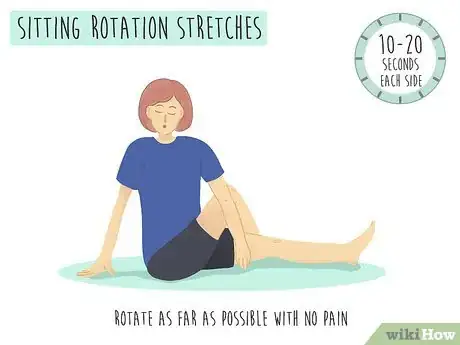
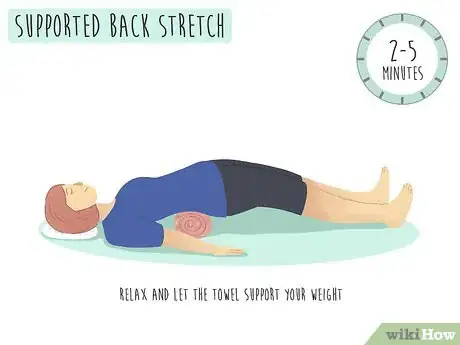


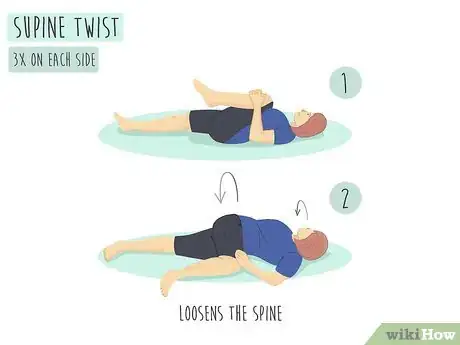
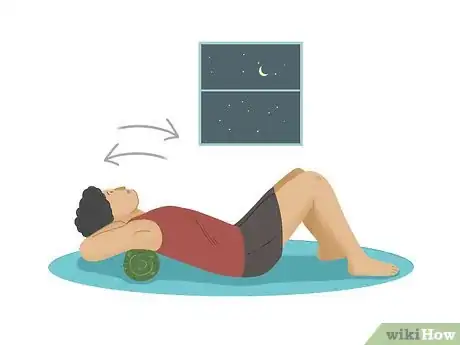
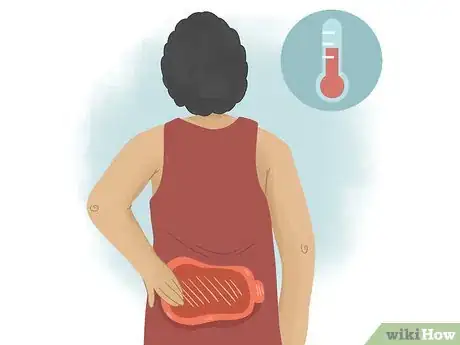


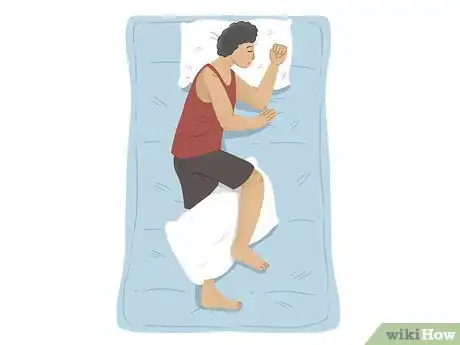
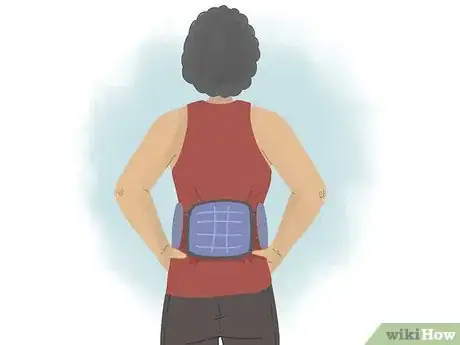
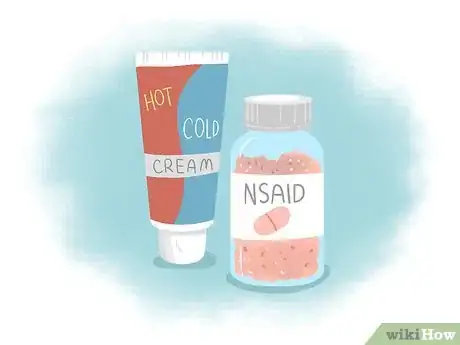
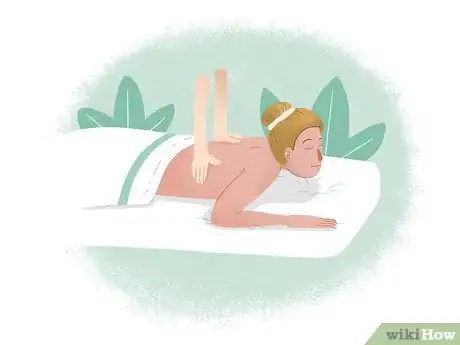


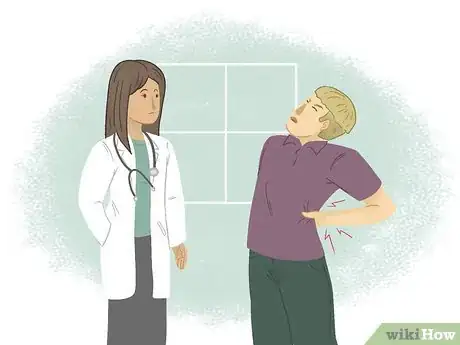
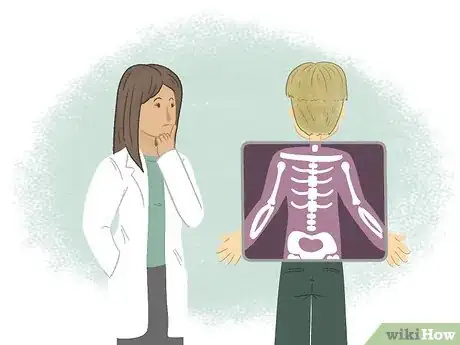

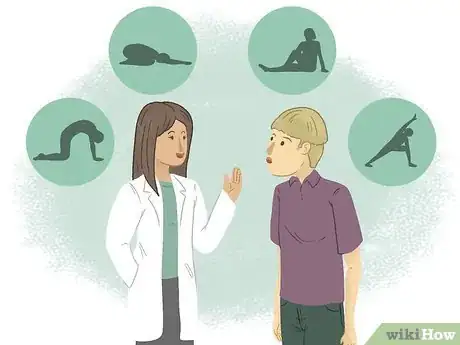
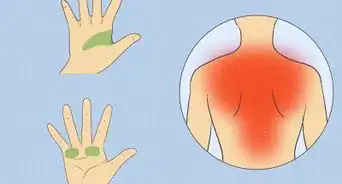
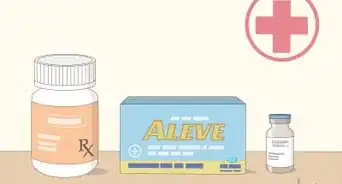
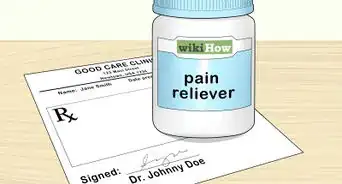
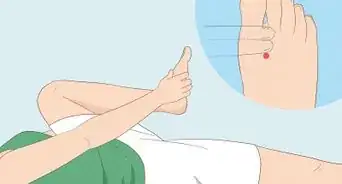
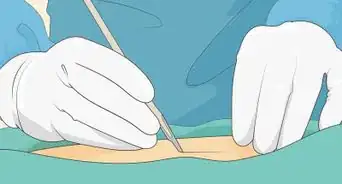
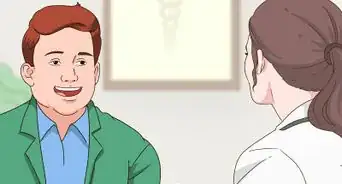
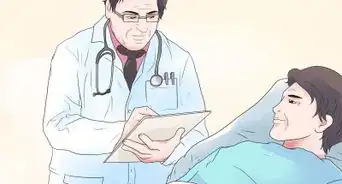
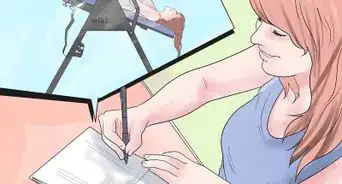
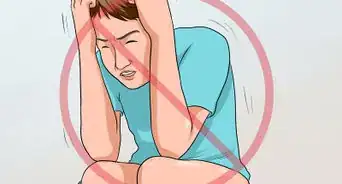

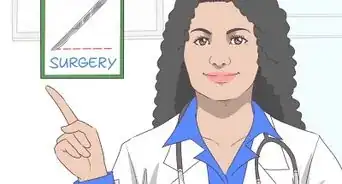

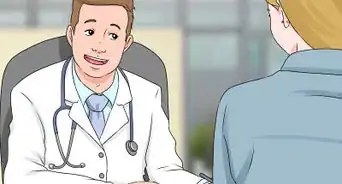
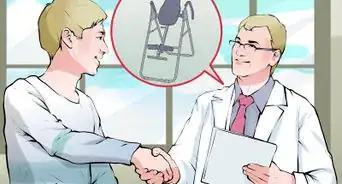






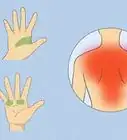
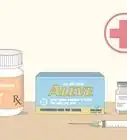

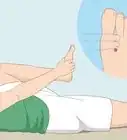



































Medical Disclaimer
The content of this article is not intended to be a substitute for professional medical advice, examination, diagnosis, or treatment. You should always contact your doctor or other qualified healthcare professional before starting, changing, or stopping any kind of health treatment.
Read More...